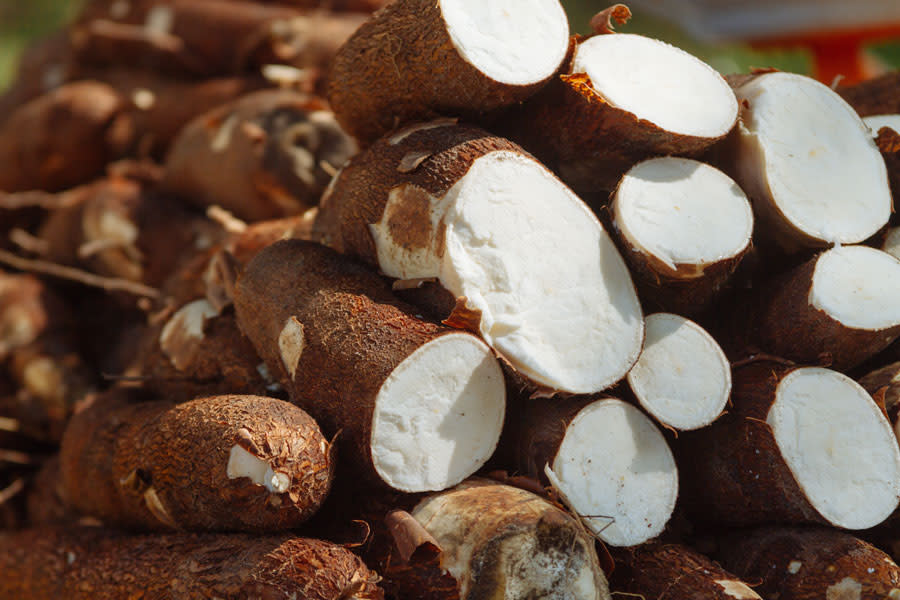
What are the health benefits of Cassava?
- By Daily Harvest
- Updated: January 2025

From first glance, this tubular bark-like root looks like a scraggly tree branch. But it’s actually a nutritious root veggie staple that feeds over 500 million people globally. Mic. Drop.
Cassava (which sounds like “kuh-saa-vaa”), also known as yuca (“yoo-kuh”), gets its roots in South America, but now thrives in the tropical regions of Africa and Asia as well. It’s a hardy plant that’s easy to grow and can withstand high-stress, drought-prone regions. The high-carb content makes it a source of necessary sustenance in food-insecure places –– aka it’s a crop that goes a long way to keep people fed. For the rest of us, there is nutritional value to be gained from incorporating more cassava into our diets. Let’s dig in.

This root vegetable is very versatile and just so happens to be the superstar ingredient in our Flatbreads. (Hint: it’s the key to our crispy gluten-free crust.) Not convinced yet? Prepare to be convinced.
Cassava is an excellent source of complex carbohydrates (unlike donuts, sorry.) A half-cup of cooked cassava provides 32 grams of carbohydrates, which are the body’s preferred source of energy.
Health is wealth, and cassava is packed with good ole vitamin C. Cooked cassava provides about 16% of the daily value for vitamin C, an important antioxidant nutrient needed for immune system function and collagen production. This powerful vitamin may also help lower risks of heart disease, hypertension, and stroke.
And it’s got other good stuff, too... In addition to traces of essential B vitamins like thiamine, niacin, and riboflavin, and the minerals iron, calcium, potassium, magnesium, copper, zinc, and manganese –– cassava is also brimming with phytonutrients like flavonoids, which are plant compounds with antioxidant properties.
Anyone, literally anyone, can enjoy cassava. Unlike many other high-carb foods, cassava is grain-free, gluten-free, low FODMAP and Paleo-friendly, so, eat up.

Before you consume a ton of cassava (though we’re not discouraging you here), just remember: don’t eat them raw. Simply soak peeled cassava overnight, then boil or roast the next day, and serve alongside your favorite protein. Or, try them mashed for an alternative to mashed potatoes.
And if you’re ready for your cassava moment, try some of these Daily Harvest faves.

We take care of food so food can take care of you. Stock up on our deliciously nourishing cassava bestsellers on daily-harvest.com.
+
Important Notes: Unless otherwise noted, nutrition information is sourced from USDA FoodData Central and reflects the reference amount customarily consumed. These are standardized servings and not necessarily the amount present in the highlighted Daily Harvest recipes. Nutrition information for Daily Harvest products can be found on packages and under "Nutrition Facts" for each product at "daily-harvest.com". Vitamin and mineral functions are sourced from Linus Pauling Institute Micronutrient Information Center.
When would you like your next delivery?
Note On Your Existing Order
Order #{{number}} for your most recent box has already been processed and is still scheduled to arrive {{date}}.
I understand Save CancelYou must meet the minimum order requirements for the box to ship. Add your replacement item(s) first and then try deleting this again.
When would you like your next delivery?
Note On Your Existing Order
Order #{{number}} for your most recent box has already been processed and is still scheduled to arrive {{date}}.
I understand Save CancelYou must meet the minimum order requirements for the box to ship. Add your replacement item(s) first and then try deleting this again.
Loading...